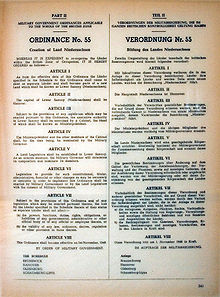
Back Estat Lliure de Schaumburg-Lippe Catalan Freistaat Schaumburg-Lippe German Estado Libre de Schaumburg-Lippe Spanish Schaumburg-Lippe Vaba Riik Estonian État libre de Schaumbourg-Lippe French המדינה החופשית שאומבורג-ליפה HE Stato libero di Schaumburg-Lippe Italian シャウムブルク=リッペ州 Japanese Vrijstaat Schaumburg-Lippe Dutch Fristaten Schaumburg-Lippe NB
| Free State of Schaumburg-Lippe Freistaat Schaumburg-Lippe (German) | |||||||||
|---|---|---|---|---|---|---|---|---|---|
| State of Germany | |||||||||
| 1918–1946 | |||||||||
 The Free State of Schaumburg-Lippe (red) within the Weimar Republic | |||||||||
 | |||||||||
| Capital | Bückeburg | ||||||||
| Area | |||||||||
• 1939 | 340 km2 (130 sq mi) | ||||||||
| Population | |||||||||
• 1939 | 53,277 | ||||||||
| Government | |||||||||
| • Type | Republic | ||||||||
| State Councillor | |||||||||
• 1918 (first) | Friedrich von Feilitzsch | ||||||||
• 1933–1945 | Karl Dreiera | ||||||||
• 1945–1946 (last) | Heinrich Drake | ||||||||
| Reichsstatthalter | |||||||||
• 1933–1945 | Alfred Meyer | ||||||||
| Historical era | Interwar · World War II | ||||||||
| 15 November 1918 | |||||||||
• Disestablished | 1 November 1946 | ||||||||
| |||||||||
| Today part of | Germany | ||||||||
| a. As State President. | |||||||||
The Free State of Schaumburg-Lippe (German: Freistaat Schaumburg-Lippe) was created following the abdication of Prince Adolf II of the Principality of Schaumburg-Lippe on 15 November 1918, following the German Revolution. It was a state in Germany during the Weimar Republic and Nazi Germany. The democratic government was suppressed during Nazi rule. At the end of the Second World War, the British military occupation government decreed on 1 November 1946 the union of Schaumburg-Lippe, Hannover, Braunschweig and Oldenburg to form the new state of Lower Saxony.



